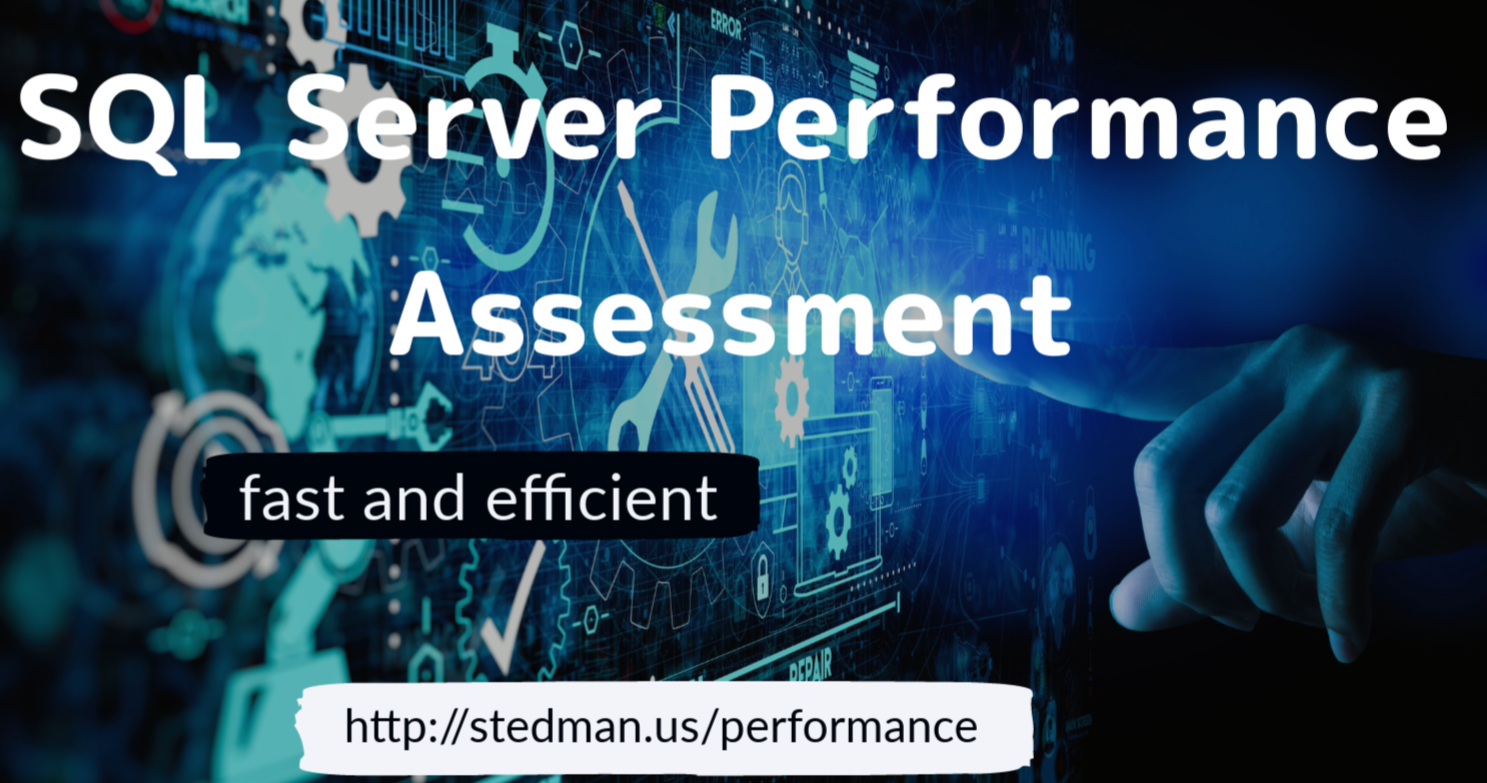Need help with this, Stedman Solutions can help. Find out how with a free no risk 30 minute consultation with Steve Stedman.
First 5 Things to Check When Your SQL Server is Performing Slowly
When your SQL Server begins to lag or perform poorly, it can be a significant hindrance to your business operations. Over my years of experience since 1990 with SQL Server, I’ve come across several common culprits that tend to affect performance. Here are the first 5 things you should check when you encounter performance issues.
1. Check for Hardware Resource Starvation
The first place to look when you notice a slowdown is at your server’s hardware resources. Monitor the CPU, memory, and disk I/O usage. If any of these resources are consistently running high, it’s a clear indication that your server is resource-starved. This might be due to an increase in the volume of data being processed or possibly inefficient queries consuming more resources than necessary. Tools like Database Health Monitor can provide you with real-time insights into your server’s performance and help identify hardware bottlenecks.
2. Evaluate Current Running Queries
Often, a slow SQL Server is a result of one or more long-running queries. Use SQL Server Management Studio (SSMS) to see which queries are currently running and how long they’ve been active. Look for queries that are taking an unusually long time to complete. These might be poorly designed queries with missing indexes, table scans, or inefficient joins. Once identified, you can work on optimizing these queries to improve overall performance.
3. Review Index Usage and Fragmentation
Proper indexing is crucial for optimal database performance. Check if your indexes are being used effectively and whether there’s excessive index fragmentation. Unused or overly fragmented indexes can slow down query performance significantly. Regularly rebuilding or reorganizing indexes can resolve fragmentation issues. Additionally, analyzing query execution plans can help determine if adding or modifying indexes might improve performance.
4. Analyze Wait Statistics
SQL Server keeps track of why queries are waiting and for how long, known as wait statistics. These can be invaluable in diagnosing performance issues. Common wait types include IO waits, indicating slow disk systems, or locking/blocking waits, suggesting concurrent access issues. By understanding what your SQL Server is waiting on, you can tailor your troubleshooting efforts more effectively.
5. Check for Outdated Statistics
SQL Server uses statistics to create query execution plans. If these statistics are outdated, SQL Server might choose a suboptimal plan, leading to slower performance. Ensure that your statistics are regularly updated, especially in databases with significant data changes. Enabling the ‘Auto Update Statistics’ option can help in maintaining up-to-date statistics.
While this is not an exhaustive list, addressing these areas will often resolve or significantly alleviate performance issues. For more in-depth analysis and continuous monitoring, consider using tools like Database Health Monitor, which can provide greater insights into server health, performance, backups, disk space, and query efficiency. It’s available for free for a single server connection, with options for monitoring multiple servers.
If you’re interested in learning more about SQL Server Performance tuning, consider enrolling in Stedman’s SQL School classes. Visit Stedman.us/school for more details. And remember, at Stedman Solutions, LLC, we’re always here to help you with your SQL Server needs. Whether it’s performance tuning, query optimization, or general support, our expertise is just a message away.
Check out our free performance tuning email course or our comprehensive Performance Tuning Class. Need help with this, Stedman Solutions can help. Find out how with a free no risk 30 minute consultation with Steve Stedman.

